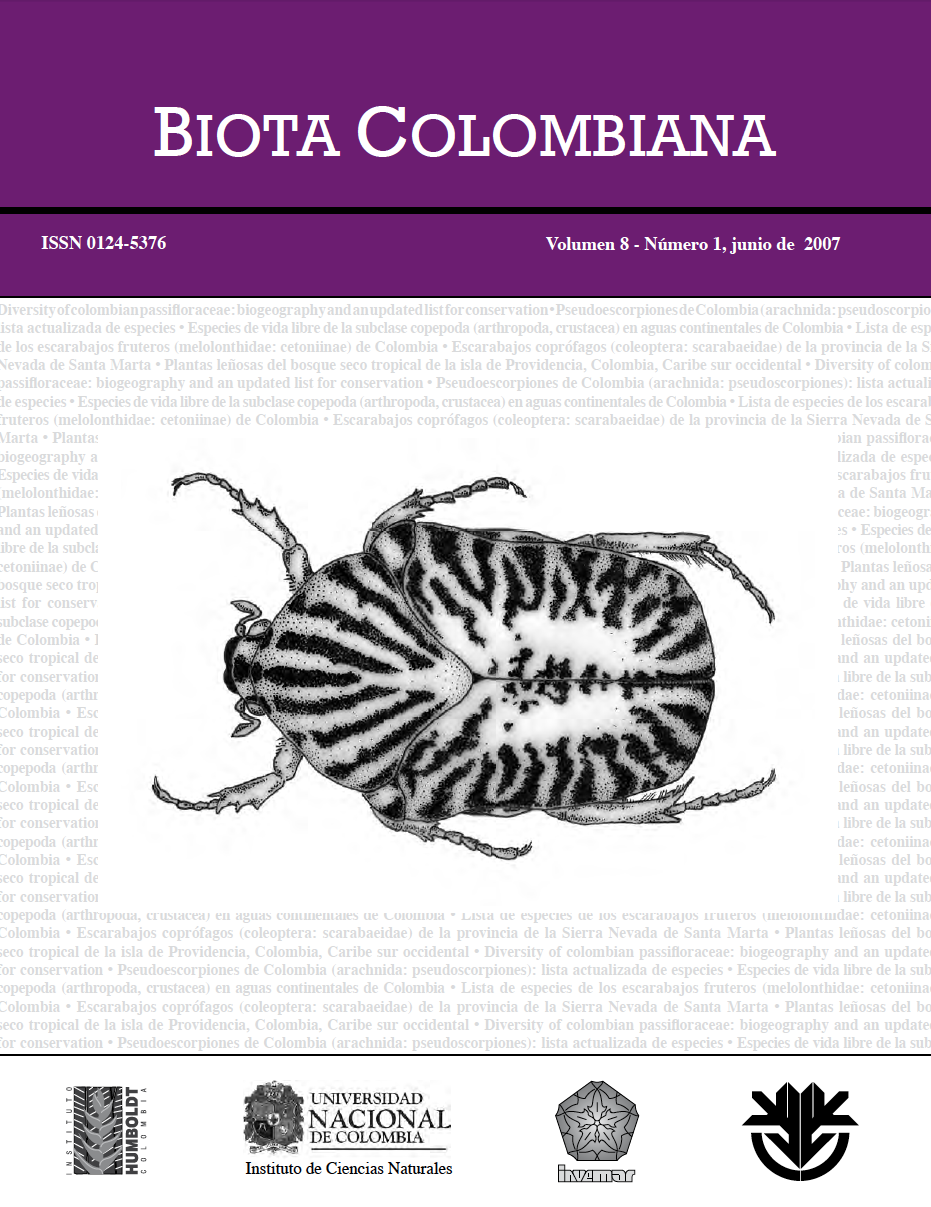Abstract (en):
The list of Colombian Passifloraceae was revised, using 3.930 records from literature, herbaria, and field observations. It includes 167 species, 165 of them native, which is equivalent to 27% of the family. Our list includes more details on species distribution and presents 26 species new to Colombia. Passiflora is the most important genus, with 162 species, whose center of diversity is in the Ecuadorian and Colombian Andes. Inside Colombia, the highest diversity is concentrated in the Andean region, which houses 81% of the species, particularly in the departments of Antioquia, Valle del Cauca, Cundinamarca, Quindío, Risaralda, and Caldas. The highest number of species is found at between 1000 and 2000 m above sea level and the most common thrive in disturbed habitats, such as roadsides, cultivated plots, and secondary forests. Most of the 58 endemic species are found at between 1500 to 2500 m and belong mainly to subgenera Tacsonia and Decaloba. Forty-two species produce an edible fruit, and nine are commercially cultivated. Among the species reported, 70% are threatened to some degree and three are considered extinct. Colombia may still house many unknown species in poorly explored departments, but more information about Passiflora diversity and distribution is needed to develop its economic potential. The conservation of this threatened species along with its habitat is essential and urgent. Because of the species’ multiple ecological interactions with many organisms, both aspects can be combined using Passifloraceae as an indicator of biodiversity in the Andean region
Abstract (es):
La lista de Passifloraceae colombianas fue revisada, usando 3.930 datos provenientes de la literatura, herbarios, y observaciones de campo. Incluye 167 especies, de las cuales 165 son nativas, representado el 27% de la familia. Nuestra lista trae más detalles de la distribución de las especies y presenta 26 especies nuevas para Colombia. Passiflora es el género más importante, con 162 especies. En comparación con otras regiones, los Andes de Colombia y del Ecuador constituyen su centro de la diversidad. Dentro de Colombia, la mayor diversidad se concentra en la región andina con 81% de las especies, particularmente en los bosques de las cuencas hidrográficas entre 1000 y 2000 m, en los departamentos de Antioquia, Valle del Cauca, Cundinamarca, Quindío, Risaralda, y Caldas. Las especies comunes crecen generalmente en habitats disturbados, como bordes de caminos y de cultivos, y bosques secundarios. La mayoría de las especies endémicas (58) son encontradas entre los 1500 y 2500 m, y pertenecen principalmente a los subgéneros Tacsonia y Decaloba. Veinte y dos especies producen un fruto comestible, y nueve se cultivan comercialmente. Entre las especies reportadas, 70% presentan algún grado de amenaza y tres se consideran extintas. Colombia puede ser el escenario de muchas especies desconocidas en departamentos poco explorados. Un mejor conocimiento de la diversidad del género Passiflora y de su distribución es necesario para desarrollar su potencial económico. Es una tarea urgente la conservación de esta riqueza amenazada y de su habitat. Proponemos combinar ambos aspectos, utilizando las Passifloraceae como indicador de la biodiversidad en la región andina, lo cual parece justificado por sus múltiples interacciones ecológicas con otros organismos.
Keywords:
Biogeography, Biodiversity, Colombia, Neotropics, Passifloraceae, Passionflower, Threatened species (en)
biogeografía, biodiversidad, Colombia, Neotrópico, Passifloraceae, flor de la pasión, especies amenazadas (es)


















